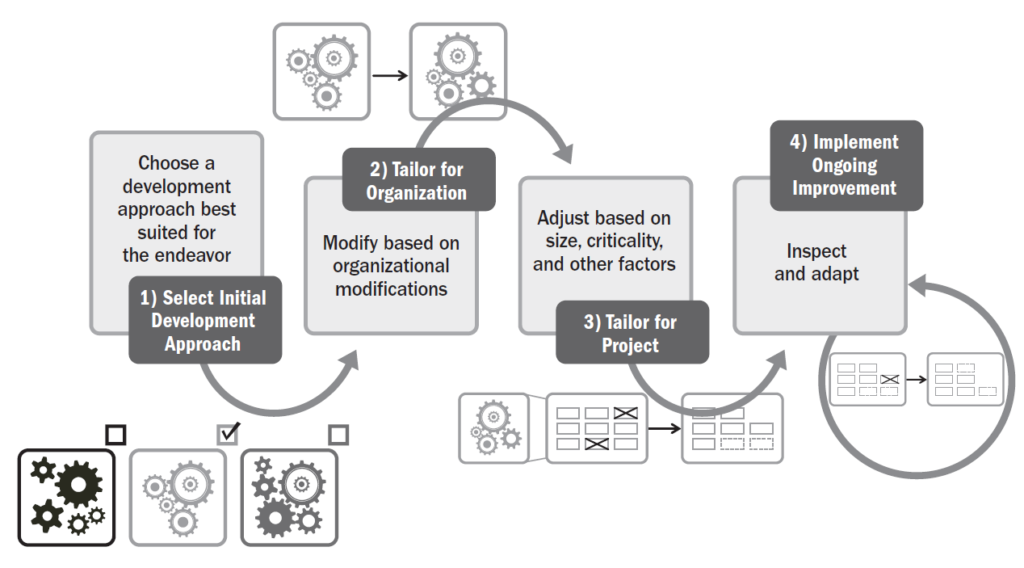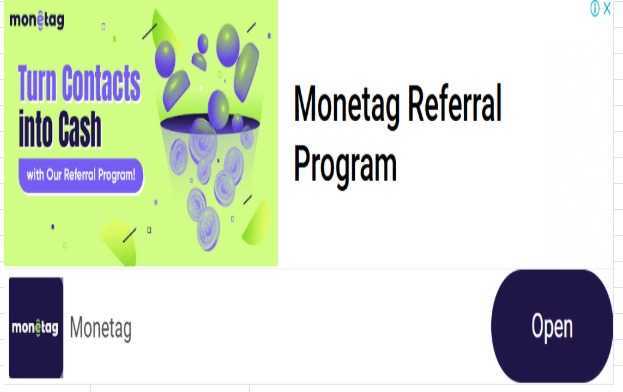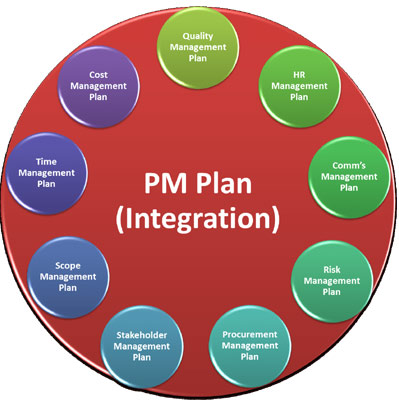A Holistic and Adaptive Approach to Project Success
Introduction
In the ever-evolving landscape of modern project management, the PMI PMBOK® Guide – Seventh Edition signifies a major shift from process-driven project planning to a more holistic, principle-based, and outcome-focused approach. One of the most fundamental and transformational areas impacted by this shift is project planning. Unlike the earlier editions that emphasized detailed, sequential planning through predefined processes and knowledge areas, the 7th Edition recognizes that planning is not a one-time phase but a dynamic, iterative, and adaptive activity that continues throughout the project life cycle.
This blog delves into the concept of Planning as redefined in the PMBOK 7th Edition, exploring its key principles, changes from previous editions, application across performance domains, and best practices for effective and agile planning in today’s project environments.
Table of Contents
- The Evolution of Planning in PMBOK
- The Planning Principle in PMBOK 7th Edition
- Key Components of Planning in a Modern Project
- Planning Across the 8 Performance Domains
- Tailoring Planning Approaches
- Planning in Predictive vs. Adaptive Life Cycles
- Role of the Project Team in Planning
- Tools, Models, and Artifacts Supporting Planning
- Common Challenges in Planning
- Best Practices for Effective Planning
- Real-World Application of PMBOK 7th Planning
- Conclusion
1. The Evolution of Planning in PMBOK
In PMBOK 6th Edition and earlier, planning was treated as one of the five process groups. It was comprised of detailed and structured processes such as:
- Develop Project Management Plan
- Plan Scope Management
- Plan Schedule Management
- Plan Risk Management, etc.
While this approach was suitable for highly predictive environments, it lacked flexibility for complex and uncertain projects.
In contrast, the PMBOK 7th Edition recognizes that projects are delivered in a variety of ways—predictive, agile, hybrid—and hence planning must be context-driven, iterative, and collaborative.
Key transition:
- From prescriptive processes and detailed upfront plans
- To principles, performance domains, and continuous planning
2. The Planning Principle in PMBOK 7th Edition
Among the 12 Project Management Principles outlined in the PMBOK 7th Edition, one is directly devoted to planning:
“Be proactive in planning. Project planning is an ongoing activity that evolves throughout the project.”
This principle implies:
- Planning is not just upfront, it is continuous and responsive.
- Plans are living documents and must be updated with new information.
- Planning should engage all key stakeholders and project team members.
- The level and detail of planning should be tailored to the project context.
This aligns with agile values, lean thinking, and systems-based approaches, recognizing that change is inevitable and must be embraced rather than resisted.
3. Key Components of Planning in a Modern Project
Planning today is not limited to schedules and budgets. It is comprehensive and considers multiple dimensions:
- Objectives and Deliverables
- Defining what the project intends to achieve and how success will be measured.
- Value Delivery
- Ensuring the project plan is aligned with delivering value to stakeholders.
- Work and Resources
- Identifying what work will be performed, by whom, and when.
- Risks and Uncertainty
- Planning for known risks and preparing for uncertainty.
- Stakeholder Engagement
- Creating strategies for effective communication and collaboration.
- Quality and Governance
- Defining quality standards, audit requirements, and compliance.
- Performance Monitoring
- Establishing mechanisms to track progress and adapt as necessary.
In essence, planning in the PMBOK 7th Edition is integrated, strategic, and adaptive.
4. Planning Across the 8 Performance Domains
The PMBOK 7th Edition organizes project work into eight performance domains, all of which require planning:
- Stakeholder
- Plan for identification, analysis, engagement strategies.
- Team
- Plan team structure, roles, development, and communication methods.
- Development Approach and Life Cycle
- Choose the right approach: predictive, agile, or hybrid.
- Planning
- Central domain for coordinating the planning process itself.
- Project Work
- Plan how to execute and manage day-to-day work and deliverables.
- Delivery
- Plan for timelines, deliverables, and quality assurance.
- Measurement
- Plan for metrics, KPIs, and performance evaluation.
- Uncertainty
- Plan for risk management, mitigation strategies, and scenario planning.
These domains are interconnected, and planning activities often span multiple domains simultaneously.
5. Tailoring Planning Approaches
Tailoring is a cornerstone of the PMBOK 7th Edition.
“No one-size-fits-all approach exists for planning.”
When planning a project, practitioners should consider:
- Project size and complexity
- Industry standards
- Stakeholder requirements
- Regulatory environment
- Cultural and geographic factors
- Technology and infrastructure
For example:
- A small internal software upgrade may require minimal documentation.
- A government-funded construction project may require extensive, formal planning with audits.
Planning must be right-sized to ensure efficiency without overburdening the team with bureaucracy.
6. Planning in Predictive vs. Adaptive Life Cycles
The planning process varies significantly based on the delivery approach.
Predictive (Waterfall) Planning
- Emphasizes upfront planning.
- Detailed project plans are created early and followed strictly.
- Suitable for stable, well-defined projects.
Adaptive (Agile) Planning
- Emphasizes just-in-time planning (e.g., sprint planning).
- Plans evolve as the project progresses.
- Stakeholders are involved continuously.
Hybrid Planning
- Combines elements of both.
- Strategic elements (e.g., budget, scope) are planned early.
- Execution details are refined iteratively.
The PMBOK 7th Edition encourages flexibility, letting project managers apply the appropriate level of planning for each context.
7. Role of the Project Team in Planning
In PMBOK 7th Edition, the project team—not just the project manager—is central to planning:
- Planning becomes a collaborative exercise.
- Team members contribute to task breakdown, estimation, and risk identification.
- This shared ownership improves commitment and accuracy.
In agile environments, teams often conduct:
- Sprint planning
- Release planning
- Retrospective-based replanning
In traditional environments, the team might participate in:
- Work Breakdown Structure (WBS) development
- Risk workshops
- Resource planning meetings
This collaborative spirit ensures that planning is grounded in reality, not top-down assumptions.
8. Tools, Models, and Artifacts Supporting Planning
The PMBOK 7th Edition introduces Models, Methods, and Artifacts—a flexible toolkit supporting planning activities.
Common Planning Tools and Methods:
- SWOT Analysis
- Assumption and Constraint Analysis
- Cost-Benefit Analysis
- Monte Carlo Simulation
- Decomposition (for WBS)
- Planning Poker (Agile estimation)
Key Planning Artifacts:
- Project Charter
- Project Management Plan
- Roadmaps and Release Plans
- Product Backlogs
- Communication Plans
- Risk Registers
- Quality Management Plans
Unlike earlier editions, PMBOK 7th lets you tailor these tools to your project environment.
9. Common Challenges in Planning
Despite best intentions, planning efforts often encounter hurdles:
- Changing Requirements
- Stakeholders evolve their expectations mid-project.
- Uncertainty and Complexity
- Difficult to plan with incomplete or ambiguous data.
- Overplanning or Underplanning
- Too much detail causes rigidity; too little causes chaos.
- Lack of Stakeholder Engagement
- Poor planning inputs lead to unrealistic plans.
- Disconnection from Execution
- Plans created in isolation fail during implementation.
- Technology or Tool Limitations
- Using the wrong tools for the project type hampers planning quality.
PMBOK 7 encourages mitigation through iterative feedback loops, continuous engagement, and a focus on outcomes.
10. Best Practices for Effective Planning
To improve planning effectiveness in line with the 7th Edition principles:
- Start with the end in mind – Define outcomes and value.
- Involve the right people early – Planning is not a solo act.
- Plan at multiple levels – Strategic, tactical, and operational.
- Build flexibility – Leave room for iterations.
- Review and adapt frequently – Continuous improvement.
- Visualize the plan – Use roadmaps, dashboards, Kanban boards.
- Communicate clearly and often – Keep all stakeholders aligned.
- Use lessons learned – Build on past experiences.
By practicing these habits, project managers can turn planning into a strategic asset rather than a bureaucratic exercise.
11. Real-World Application of PMBOK 7 Planning
Case 1: Software Development with Agile Planning
An IT firm used a hybrid approach for a digital banking project. They planned high-level milestones upfront (predictive) and conducted two-week sprints (adaptive). Continuous customer feedback helped refine requirements, and sprint retrospectives led to plan refinements every two weeks. The flexible planning led to faster releases and higher customer satisfaction.
Case 2: Construction Project with Predictive Planning
A commercial building project involved detailed planning before execution. WBS, Gantt charts, procurement plans, and risk registers were developed in the planning phase. As changes emerged, impact analysis was conducted before plan updates. Using PMBOK’s principles helped maintain control while staying responsive.
Case 3: NGO Project with Minimal Planning
An NGO running a relief campaign in a flood-affected area used minimal upfront planning. Basic objectives and constraints were defined, and adaptive planning occurred daily based on needs. PMBOK’s emphasis on continuous planning helped the team remain effective in a chaotic environment.
12. Conclusion
The PMBOK 7th Edition reimagines planning not as a rigid checklist but as a fluid, context-driven, and principle-based process. It shifts the emphasis from documentation to value, outcomes, and collaboration. Planning is no longer confined to a single phase of the project—it is a continuous process that adapts to changing realities and evolving stakeholder needs.
Whether working in a predictive, adaptive, or hybrid environment, project managers must embrace this new vision of planning—flexible, integrated, and outcome-focused. By doing so, they increase their capacity to navigate uncertainty, align stakeholder expectations, and ultimately deliver successful, value-driven projects.
In a world where change is the only constant, planning in the PMBOK 7th Edition offers a powerful framework to stay grounded, yet agile—a blueprint for delivering success in any project environment.



